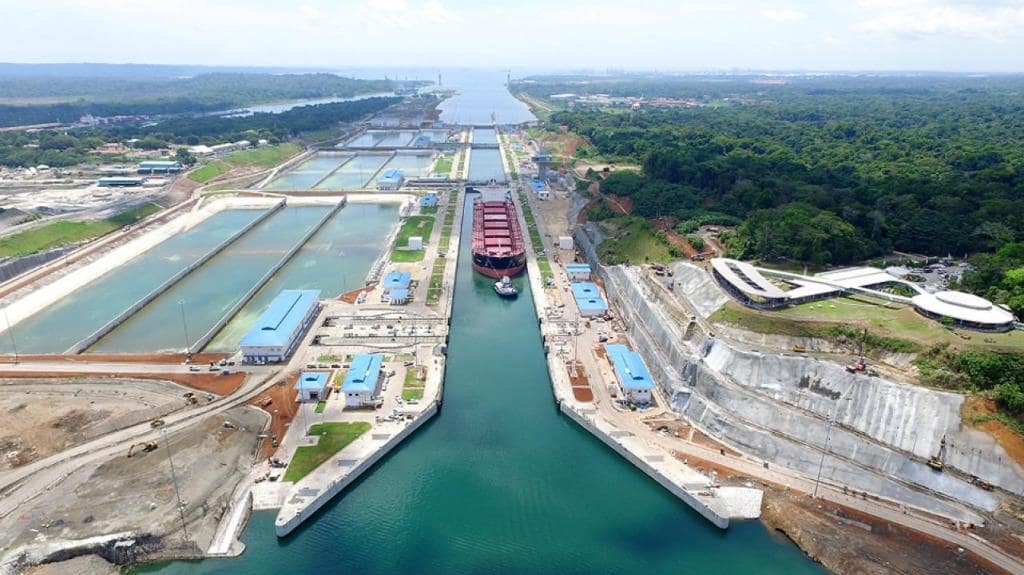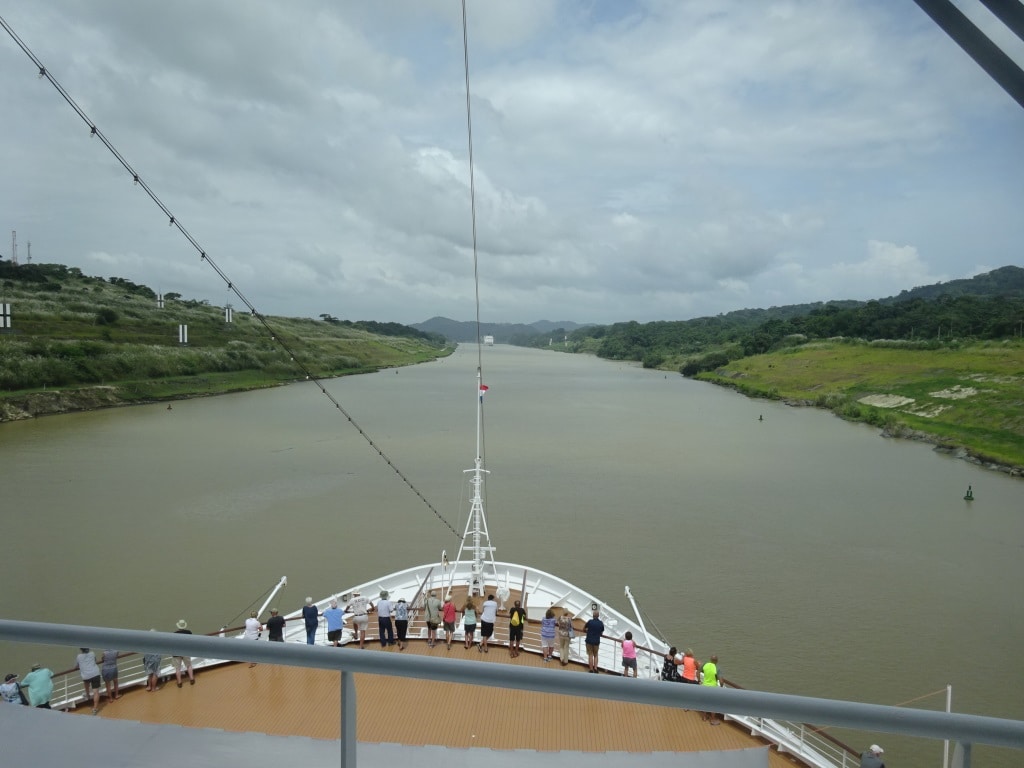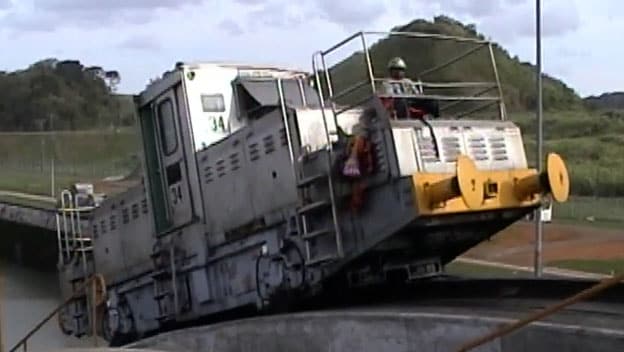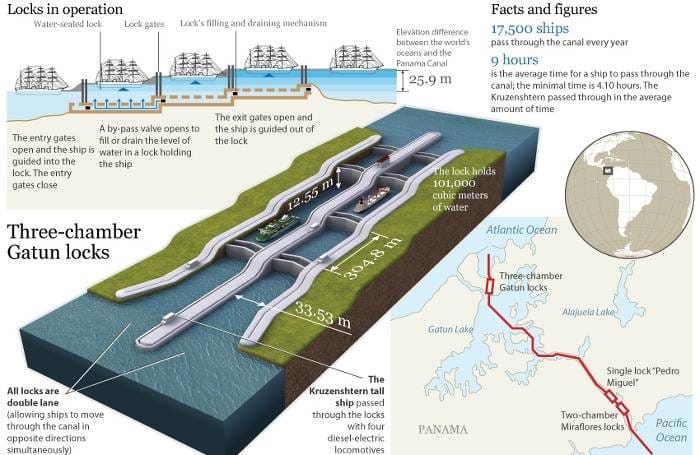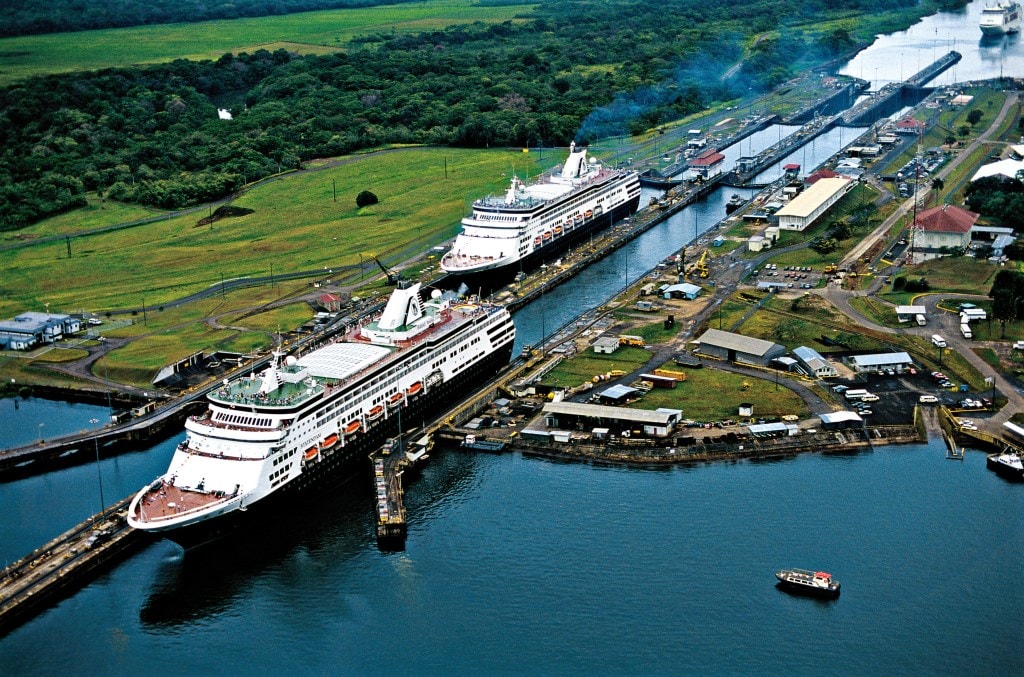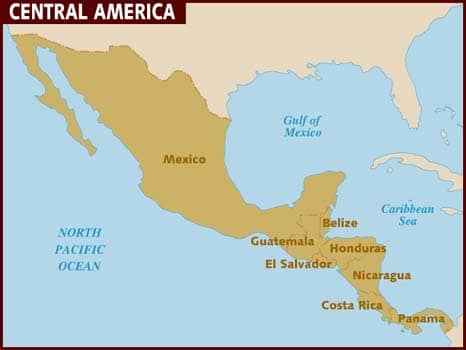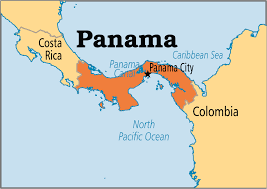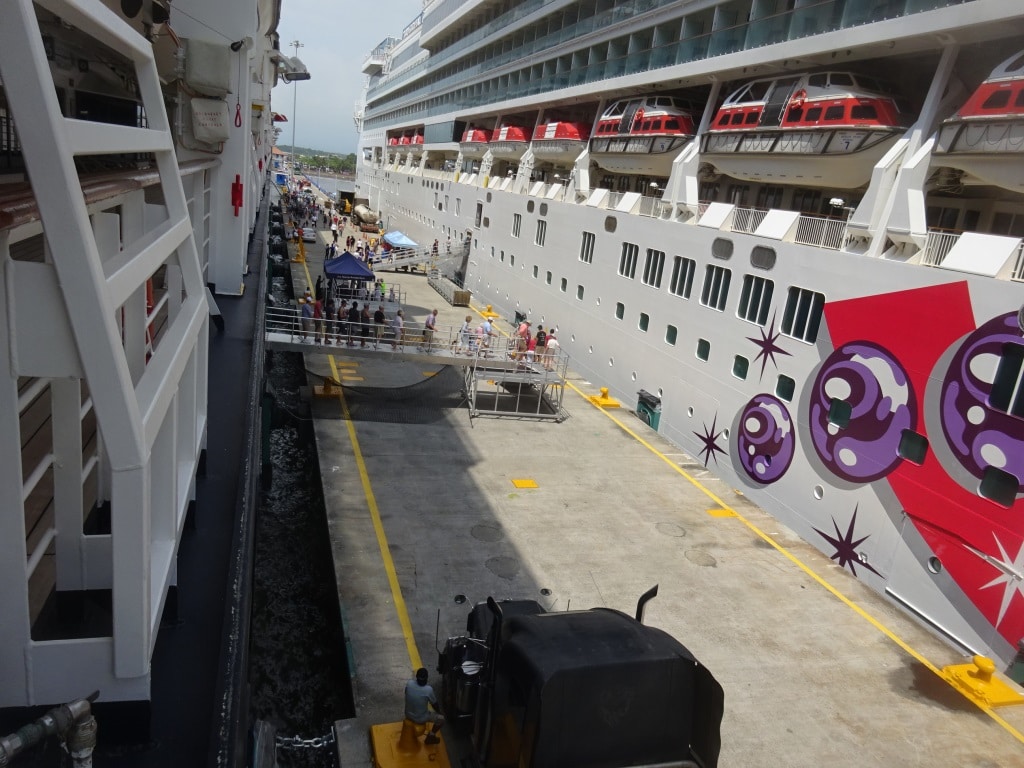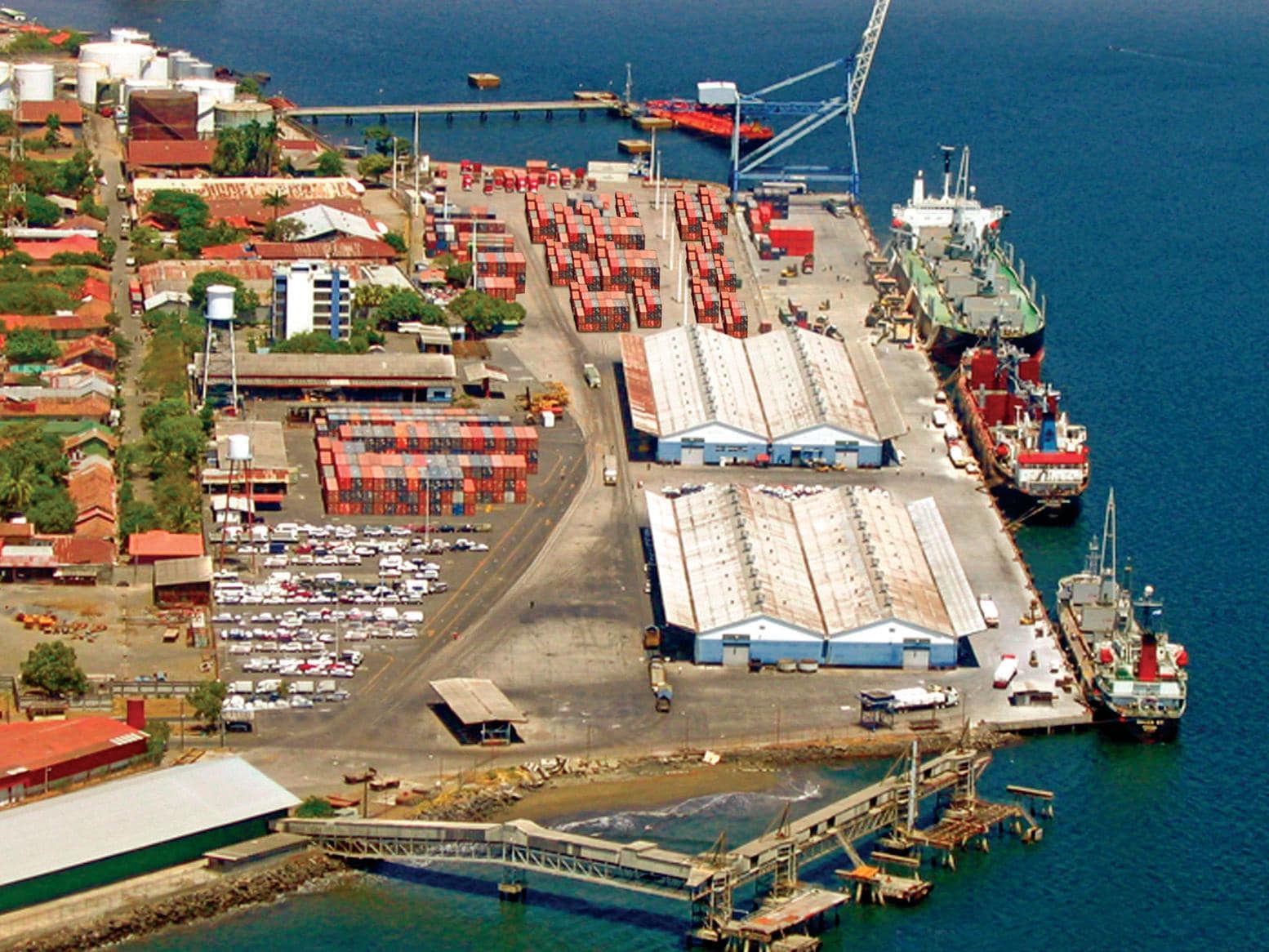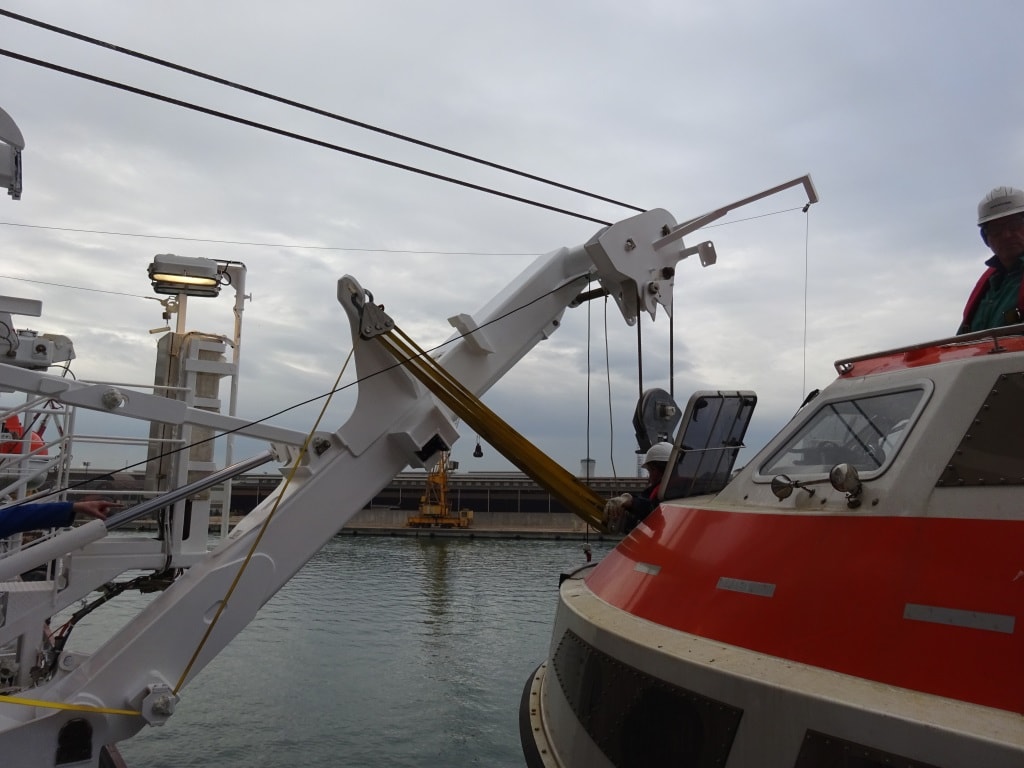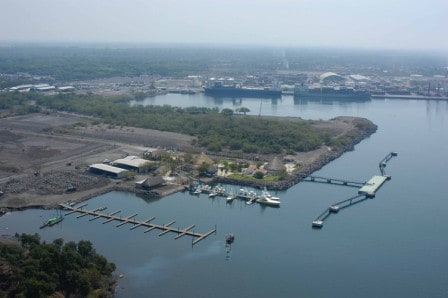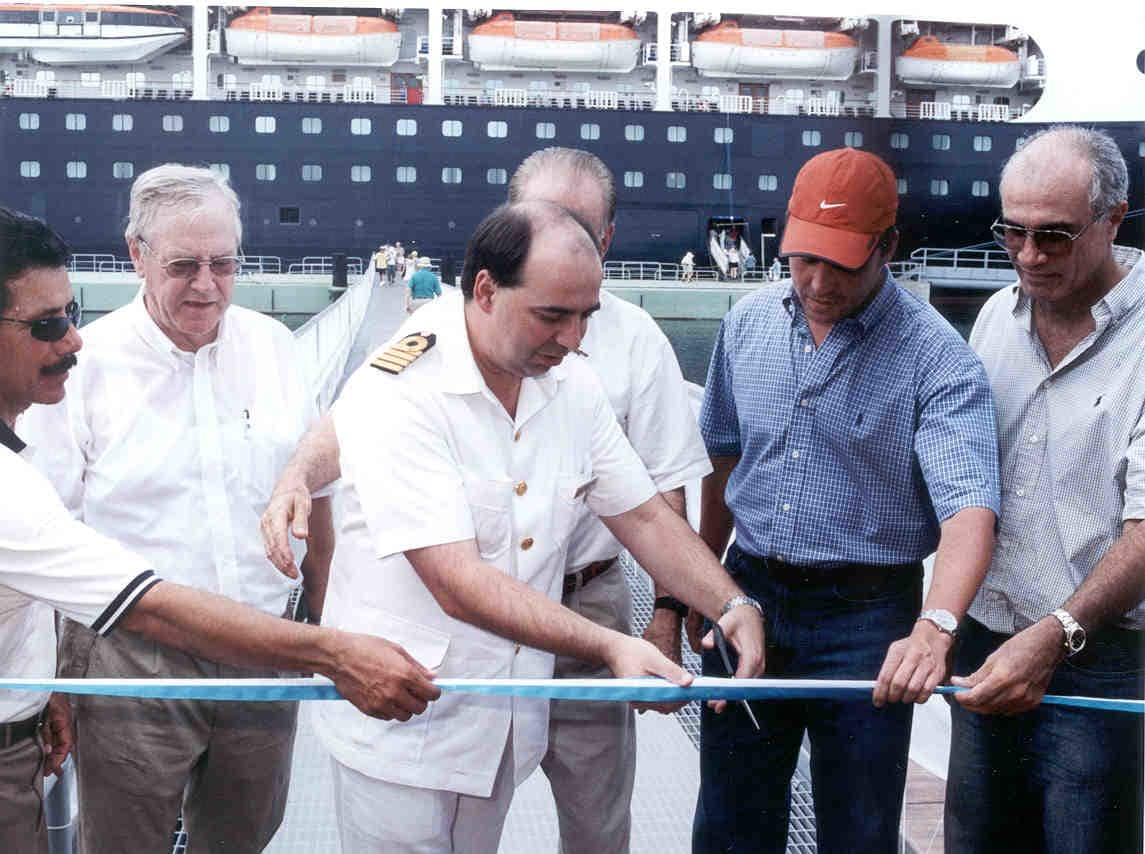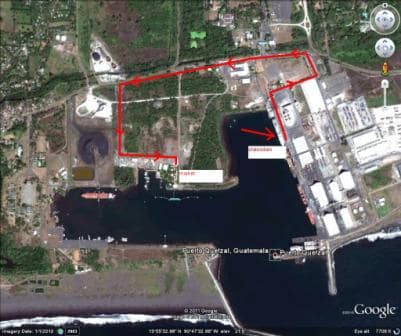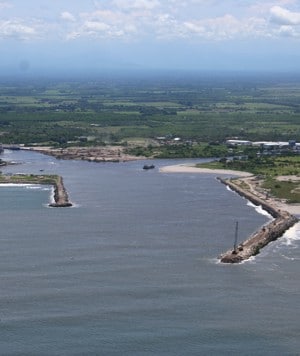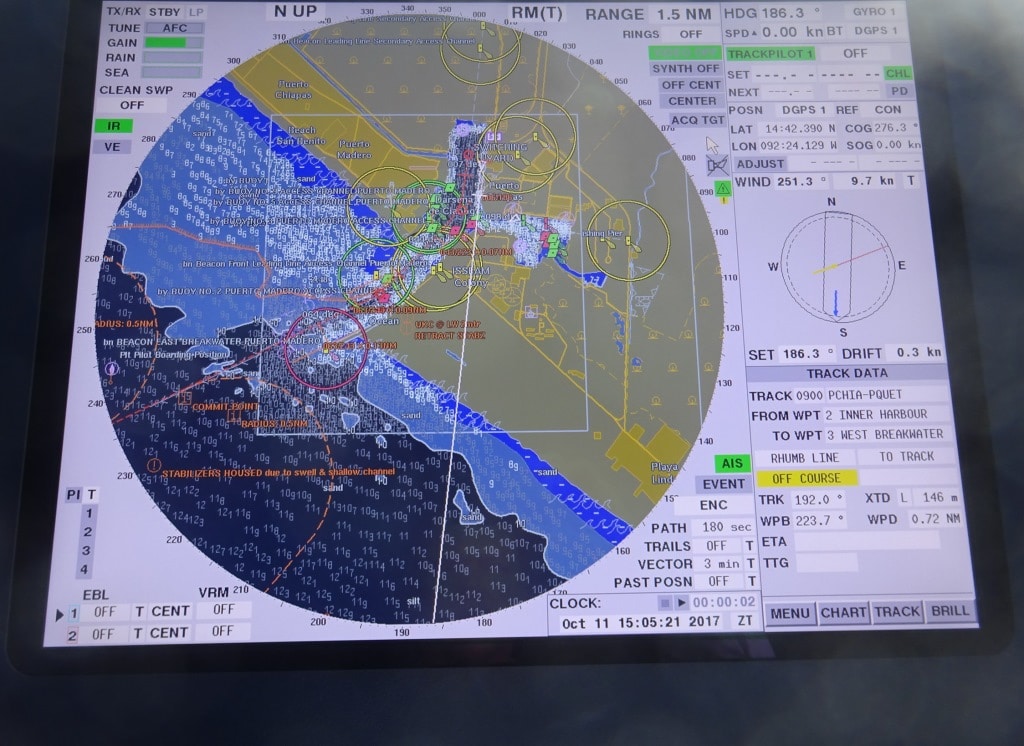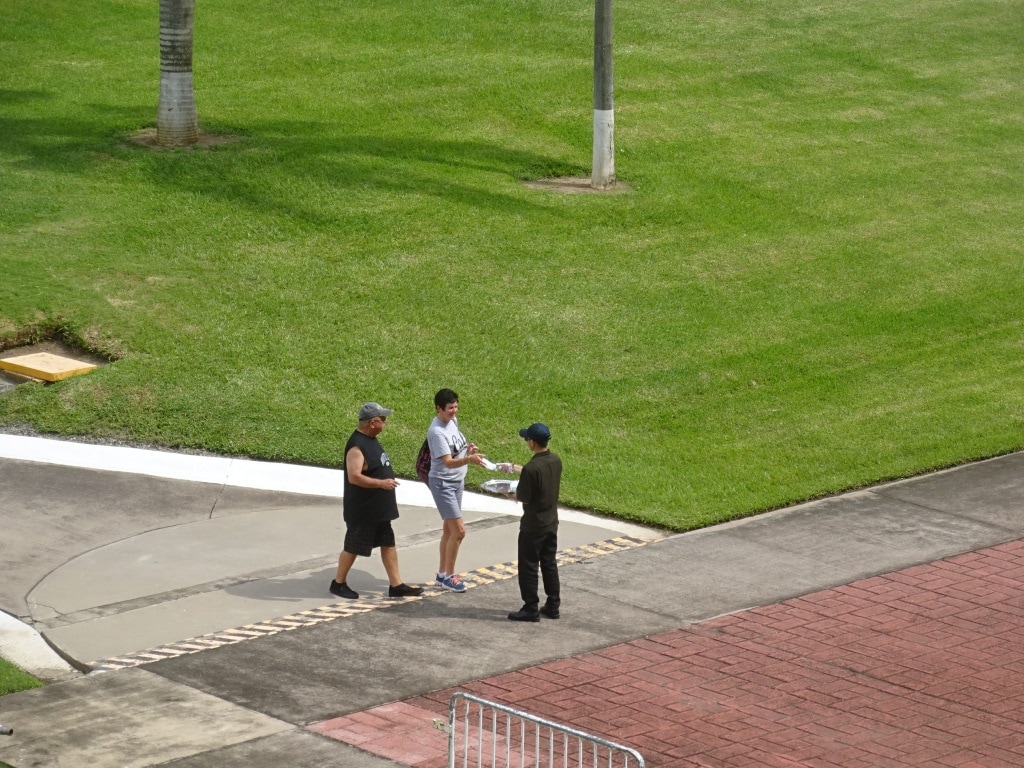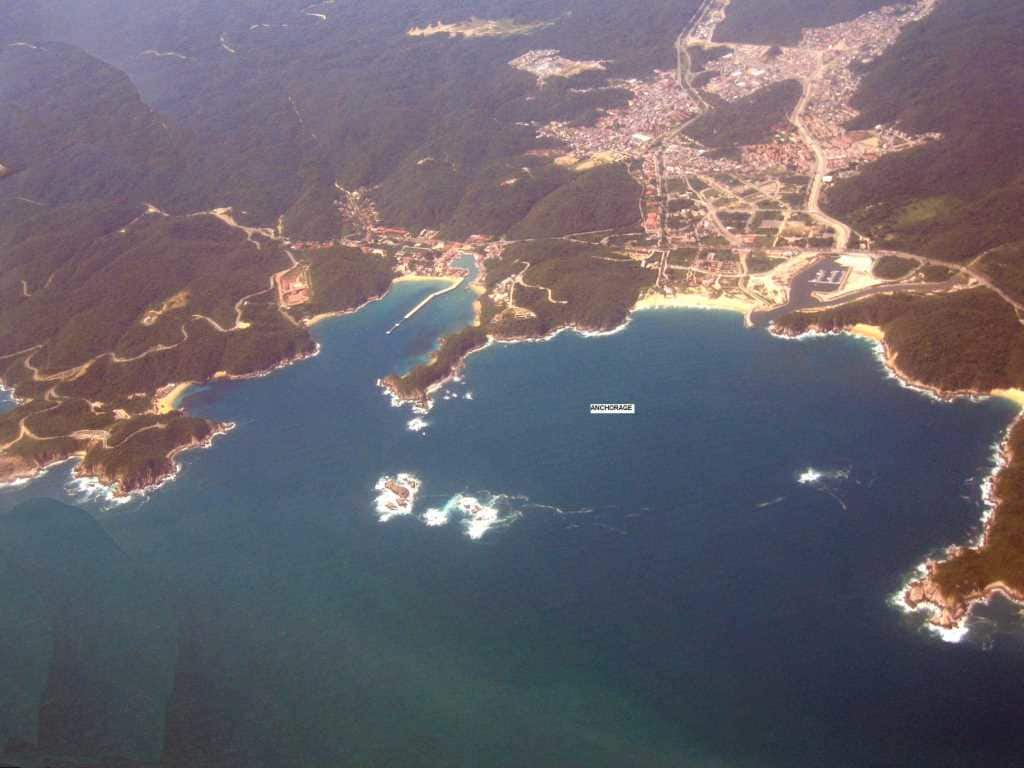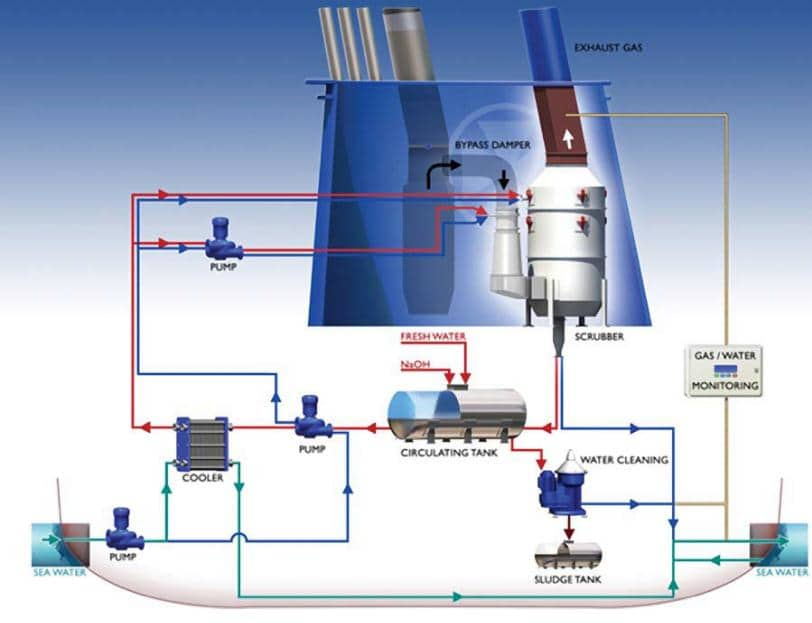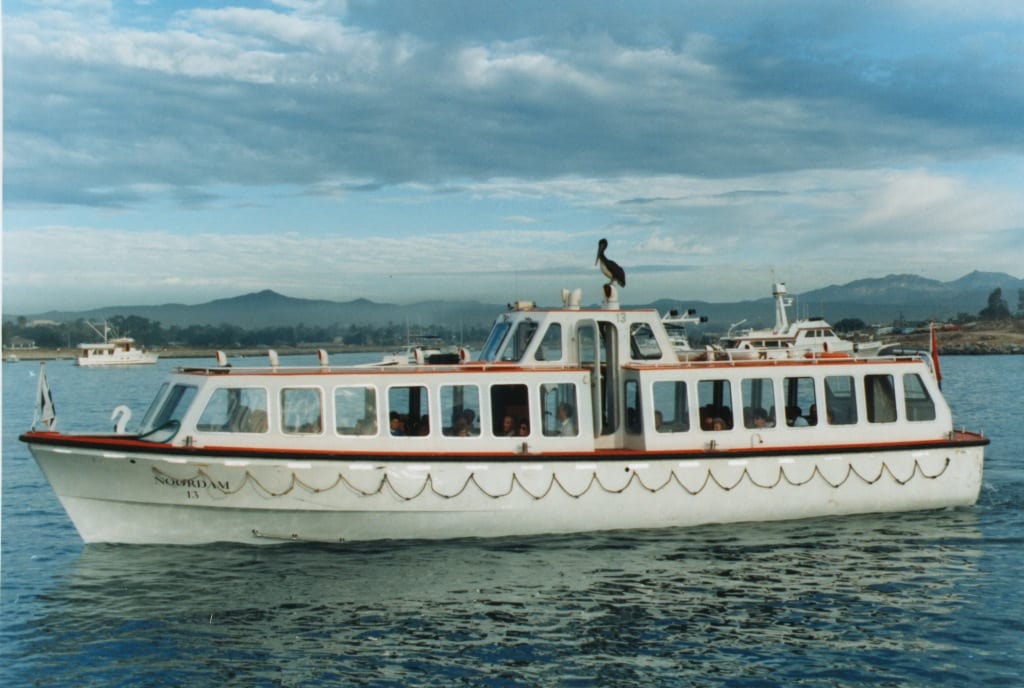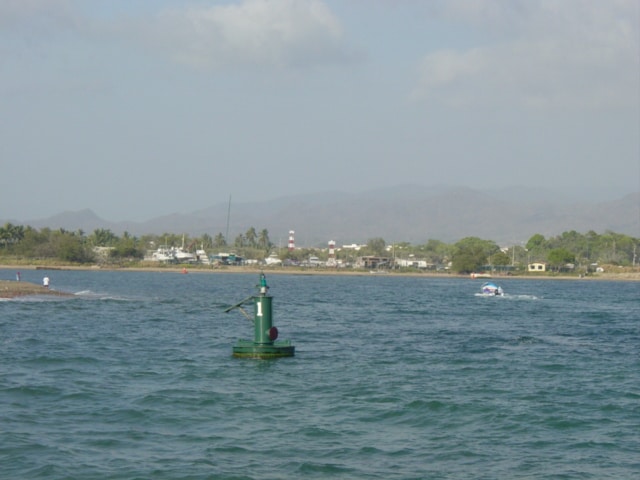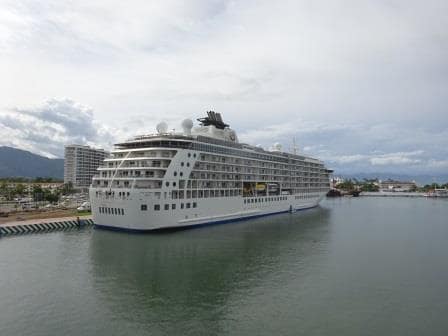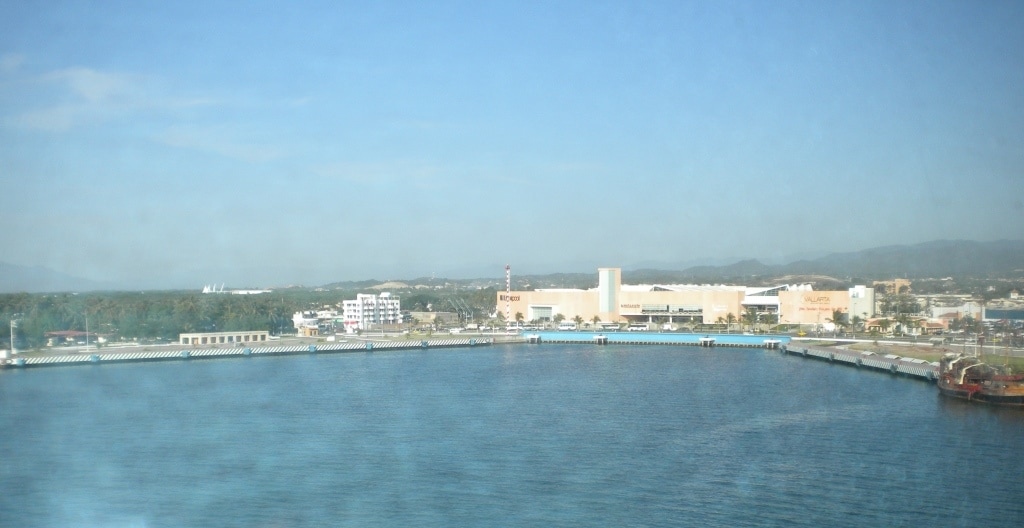A sort of communal sigh of contentment settled over the ship today after a long and hard day of sightseeing all the way through the Canal. On top of that we had an hour forward last night to get ourselves in tune with Aruba time and thus today is was a quiet day on board with a lot of guests taking it very easy. As a result the Greenhouse Spa with its wellness and pampering programs was doing very well and everywhere guests where enjoying comfortable seats and were having a hard time getting past page one of a new book, without deep and profound contemplation setting in.
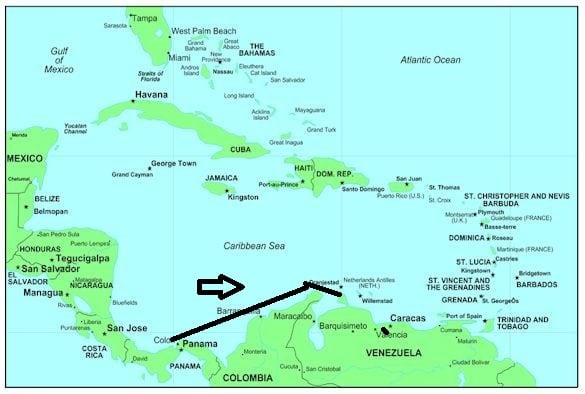
Sailing in the lower southwest part of the Carib. The Trade Winds have been blowing freely all the way from the eastern rim and have built up quite a nice swell by the time it comes to Barranquila
The ship is sailing today north of Colombia and is going against the Trade Wind and the accompanying seas. Thus on occasion there is a shudder going through the ship, when the bow collides with a wave under the wrong angle. All normal routine but it takes getting used to as it sounds as if the ship is hitting a block of concrete once in a while but not moving for the rest.
I am gearing up for one of the more complicated drills that I conduct when on board. In my blogging history you will find exercises where we put the whole show lounge on fire, rescued multiple injured persons from collisions and setup three or four hospitals (triage areas) to deal with larger numbers of casualties. We also have another challenge with cruise ships and that is if a ship rolls severely in bad weather. That has happened in the past in the cruise industry and even while guests are warned, some severe rolling can still result in a large number of small or medium severe injuries which all need attention at the same time. Ships infirmaries cannot cope with such an instant influx and thus triage is needed to establish a picking order of importance. Read: selecting the most serious injuries first. We mark those from Green to Yellow to Red to Black. With green being walking wounded and Black being the end of it all. For the medical staff, the yellow and the red, those who need immediate attention and those will not survive unless instant action is taken, will cause the biggest challenges.
A number of years ago, an Australian Cruise ship, called the Pacific Sun got caught in synchronized rolling. There is a clip of it somewhere on You Tube. This can happen if the speed and the direction of the ship is such that ocean swell can catch the ship under the exact right angle and cause that ship to roll with the same frequency as the wave that is pushing it. The only way to stop that is to change course and/or speed. But before the bridge has carried this corrective action, a few nasty rolls can have occurred already. Resulting in all sorts of injuries, and lots of people descending on the ships hospital all at once. Then suddenly 5 medical staff have to attend to 60 or 70 people who need (and demand) instant attention.
So tomorrow we are going to do an exercise to see if our protocols work as expected and to get more experience in this evolution. Today I spend a lot of time discussing everything with the major stake holders. Medical, the various groups in the Hotel Department and the Heads of Departments. Deck and engine are only involved on the edge of things as their primary focus is on keeping the ship safe if something happens. So tomorrow a large group of volunteers will descend on the ships hospital and one Medical Officer has to do Cabin calls for those who cannot get to the hospital. So our guests might see a lot of housekeeping running around with stretchers collecting various hapless volunteers who are simulating broken legs or worse. An important part will be the correct administration of all the casualties so at a certain point the Captain will have to alert the outside world and get boats or helicopters in or divert to the nearest port for the final disposition of those who need further shore side treatment. As we are working with a lot of people it should be interesting as we never know what one or two individuals will do when they get creative.
Tomorrow there will also be a lot of people. We will be in Aruba with 5 cruise ships. Caribbean Princess, Adventure of the Seas, Zenith, Nieuw Amsterdam and Freewinds. Originally it was not supposed to have been so busy but cruise companies were forced to replace Puerto Rico, St. Maarten, St Thomas and the BVI with other ports until the hurricane repairs have been completed. Roughly 11000 guests will invade Oranjestad during the day, not counting the crew. I think the local infrastructure can handle this but it is going to be busy in Front street. I do not think that the shop keepers will be offering many bargains tomorrow. The crew will want to go to the big supermarkets and hopefully they will be able to get taxis.
Weather for tomorrow: Sunny and hot 87oF / 31oC and very windy.
